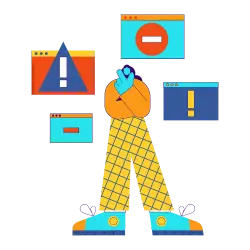To understand ACH return code R17, we must first take a look at what an ACH payment return code is and the means to solve it. Today, customers want the ability to make purchases through the payment form they prefer. Because some people may now prefer alternative payment methods, simply accepting cash or credit and debit cards might not provide your customer base with enough options. Businesses that can accept and process ACH payments present their customers with yet another payment option, potentially widening your customer base and improving your bottom line.
The majority of ACH payments run through without a problem. However, you may come into a situation where you receive one of 85 ACH return codes. With there being a variety of reasons why you may receive a return code, it’s important to find the exact reason you’ve received a return code error. The specific return code that you receive provides details about why you received a return code and potential solutions based on the situation. In this guide, we’ll cover the R17 return code in depth.
What does ACH Return Code R17 Mean?

The R17 return code is not as common as other ACH return codes. That said, it’s likely that you won’t be as familiar with dealing with R17 as other return codes. The typical reason that you will receive the R17 return code involves required field errors. The RDFI (Receiving Depository Financial Institution) edits certain fields unedited by the ODFI (Originating Depository Financial Institution). In 2019, NACHA expanded the use of the R17 ACH return code to also indicate when the original transaction was a questionable transaction or part of anomalous activity. RDFIs may use the R17 ACH return code in cases that they believe that the entry contains invalid account information initiated under questionable circumstances.
This use of the R17 return code is at the discretion of the RDFI. When an RDFI uses the R17 ACH return code, it is required to additionally add “QUESTIONABLE” in the description.

Formal Definition
The official definition of the ACH return code R17 is “file record edit criteria.” What this means is that the RDFI cannot process the fields. Both a consumer and non-consumer account type may give this error. The timeframe for this error is typically 2 banking days.
Solutions to Fix R17 Return Code
Now you know what it means if you receive the ACH return code R17. There are some potential workarounds that you can try to troubleshoot from here. Let’s cover what you should know about fixing the R17 return code.
The ACH Operator is unable to edit certain fields. The RDFI is responsible for editing these fields in their place. If the entry can’t be processed by the RDFI, you should identify which fields are causing the processing error. To do so, You can use the addenda information field of the return to identify these fields. This is the first step in troubleshooting.
Ultimately, the RDFI will not process a transaction with the R17 return code until certain fields have been edited to enable the payment. So, you must correct these entry errors before initiating further entries.




